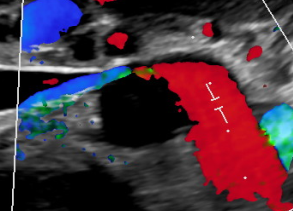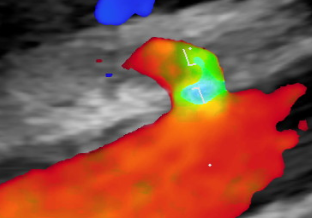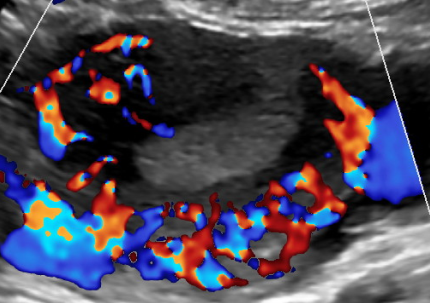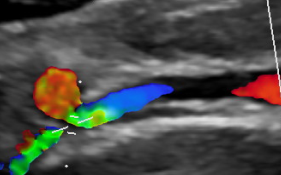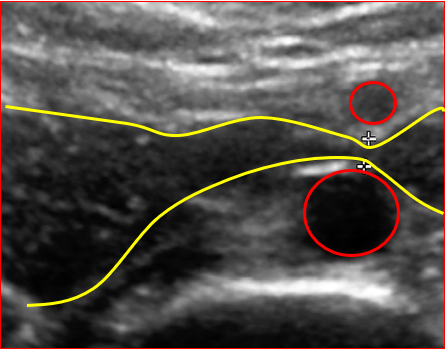- New stuff to read and discuss
- What patients say
- Clinic / online appointments
- Why the diagnosis of a psychosomatic illness is often a misdiagnosis
- Vascular Compression Syndromes
- Do you have questions?
- Checklist vascular compression syndromes
- Description of your symptoms
- Researchers from the Mayo Clinic confirm my concept of the Midline Congestion Syndrome
- Musculoskeletal pecularities of female puberty
- Lordosis /Swayback- Origin of many abdominal compression syndromes
- Nutcracker-Syndrome is a misnomer! Lordogenetic left renal vein compression is a more appropriate name!
- May-Thurner-constellation (May-Thurner-syndrome, Cockett’s syndrome)
- Midline (congestion) syndrome
- Pelvic congestion syndrome
- Celiac Trunk Compression / Dunbar syndrome / MALS / Arcuate ligament syndrome
- Wilkie-Syndrome / Superior-mesenteric-artery-syndrome
- Evlauation of vascular compressions with the PixelFlux-method
- Connective tissue disorders predispose to multiple compressions
- Postural tachycardia syndrome (POTS) – the hemodynamic consequence of vascular compression syndromes and loose connective tissue
- Restless legs-a little known symptom of abdominal vascular compression syndromes
- Pudendal neuralgia in vascular compression syndromes
- Migraine and Multiple Sclerosis
- Treatment of vascular compression syndromes
- Fatal errors in the treatment of vascular compression syndromes
- Risks of stents in venous compression syndromes
- Surgical treatment of abdominal compression syndromes: The significance of hypermobility‐related disorders
- Nutcracker and May-Thurner syndrome: Decompression by extra venous tube grafting and significance of hypermobility related disorders
- Our surgical treatment of vascular compressions
- Vascular compression syndromes I recently detected
- Detection of a new compression syndrome : Bilateral compression of the internal iliac vein between the psoas muscle and the internal iliac artery in a patient with chronic penile pain
- Diaphragmatic compression of the hepatic veins – a novel compression syndrome
- Post-prandial pain in the right upper abdomen due to a newly detected compression syndrome of the right renal vein
- A new sonographic sign of severe orthostatic venous pooling
- Gradually increasing, unbearable pain in the left flank only when standing or sitting – first description of a new compression syndrome
- A rare variant of Wilkie syndrome
- Kaleidoscope of instructive cases
- POTS – different from what you might think: an example
- Severe ataxia in a young woman with severe spinal congestion – complete resolution after decompression of the left renal vein
- Enigma resolved: vomiting during hip stretching
- Swollen bluish feet nausea unbearable epigastric and breast pain plus breathlessness
- Muscle cramps caused by a posture dependent pubic compression of the femoral artery
- Unbearable orthostatic pain in the autotransplanted left kidney
- Unbearable abdominal pain only while standing – easily diagnosed with PixelFlux
- Gradually increasing, unbearable pain in the left flank only when standing or sitting – first description of a new compression syndrome
- Abdominal pain due to liver compression in slipping rib syndrome in an EDS patient
- Genital and sexual symptoms of vascular compression syndromes – patient with ulcer of labia minora
- Posture dependent left flank / thoracic / lumbar pain – a new compression syndrome I recently detected
- Posture dependent unbearable breathlessness and fullness in the right upper abdomen due to a variable diaphragmatic compression of the hepatic veins and the vena cava inferior
- Migraines may develop in the wake of vascular compression syndromes
- Diaphragmatic compression of the liver veins with hepatic and intestinalis congestion
- Ultrasound Diagnostics
- Profile
- Functional colour Doppler ultrasound – how I do it
- Perfusion Measurement – PixelFlux-method
- Research
- Publications
- Nutcracker and May-Thurner syndrome: Decompression by extra venous tube grafting and significance of hypermobility related disorders
- Papers authored by Th. Scholbach
- Publications
- Inauguration of measurements of the tissue pulsatility index in renal transplants
- From nutcracker phenomenon to midline congestion syndrome and its treatment with aspirin
- First sonographic tissue perfusion measurement in renal transplants
- First sonographic bowel wall perfusion measurement in Crohn disease
- First sonographic renal tissue perfuison measurement
- First sonographic measurement of renal perfusion loss in diabetes mellitus
- PixelFlux measurements of renal tissue perfusion
- Why I prefer not to publish in journals but in the Internet
- Vessel stretching in nephroptosis – an important driver of complaints
- Publications
- Expertise
- Bornavirus Infection
- Scientific cooperation
- Cookie Policy
- Language:

- Cookie Policy (EU)

May-Thurner-constellation (May-Thurner-syndrome, Cockett’s syndrome)
We discriminate May-Thurner-syndrome (aka Cockett’s syndrome), which is May-Thurner-constellation with thrombosis of the left pelvic veins or the left leg, from its preliminary stage,from the May-Thurner-constellation, in which the symptoms described below occur before a thrombosis may develop.
Frequent symptoms of the May -Thurner-syndrome and May-Thurner-constellation:
- pelvic pain (often on the left side)
- radiating to the left thigh
- left flank pain
- swelling and heaviness of the left leg
- tendency to develop thromboses and varices in the left leg
In May-Thurner-syndrome (named after two Swiss physicians who described the condition first) the blood from the left side of the pelvis cannot pass easily across the sacral bone to enter the inferior vene cava. The left common iliac vein is compresseed by the sacral bone form behind and by the right common iliac artery from above.

left: the sacral bone and its promontory (Promontorium) compress the left common iliac vein (VIC) from behind – color Doppler ultrasound image right: MR-Angiography shows flattening and signal extinction of the left common iliac vein on the promontory
Due to the increased pressure inside the left common iliac vein the blood is circumvented to bypass the promontory. It runs backwards into the left internal iliac vein across the midline organs of the pelvis. These are the uterus (prostate), the ovaries, the urinary bladder, the vagina, the urethra and the rectum, the external genitals (greater labia in women and the root of the penis in men).
After crossing these organs in a manner and extent that varies greatly among individuals, the blood from the left part of the pelvis and the left leg enters the right internal iliac vein to be transported with the blood from the right leg into the inferior vena cava. If the additional volume from the left side is large it may hamper the drainage of the right leg. Then, not only swelling of the left leg but also of the right one can be observed. If the passage across these midline organs is difficult due to the usually smaller veins of these organs, pain and dysfunction of these organs may occur. These are rectal bleeding and constipation, painful and frequent micturation, painful sexual intercourse, painful menstruation, prominent and painful veins in the genitals (mainly of the left labia), varices of the left leg, pain of the left ovary and in the center of the pelvis due to uterus varices.
This is then called midline (congestion) syndrome.
A more detailed desription of vascular compression syndromes can be downloaded here.
Please see the advice concerning medical explanations on our website.















